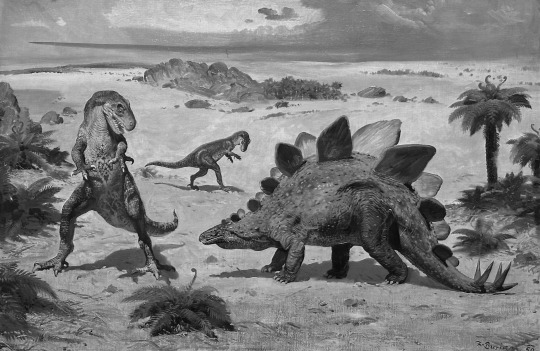#zdeněk burian
Text
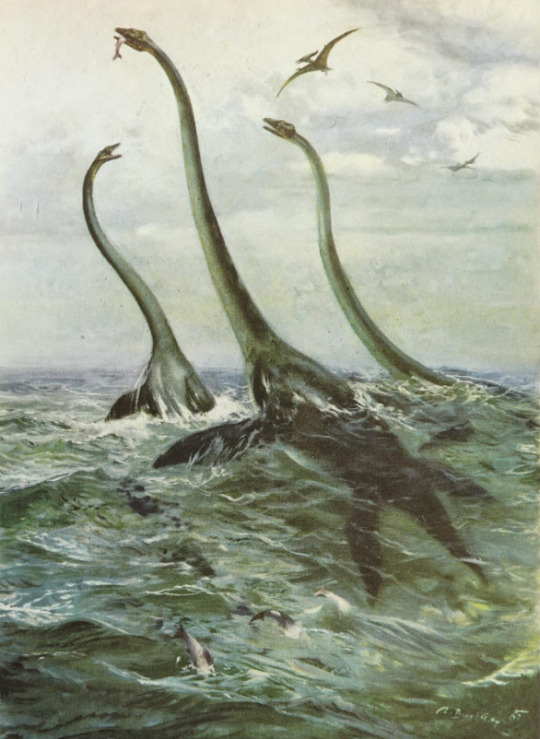
"The North American Upper Cretaceous Elasmosaurus, which attained a length of about 44 feet, was a veritable giant among the Plesiosaurs."
Prehistoric Sea Monsters. Written by Dr. Josef Augusta. Illustrated by Zdeněk Burian. 1966.
Internet Archive
1K notes
·
View notes
Text

Dying Mammoth, Zdeněk Burian, c. 1962
The world felt ripped apart during the avalanche. The floor moved, the hillside was the sky, everything was white, and trees snapped like pencils. Instincts were useless. There was no way to fight or flee; the mammoth could only be swept up with the chunks of mountain and forest. A thick, broken branch punctured the mammoth's haunch. A boulder slammed into its ribs. Snow filled the animal's nostrils and ears. It was better that way.
When it was all over, and the world stilled, the mammoth was just a lump among all the other refuse. It could not move; it did not want to, really. Breaths were difficult under the blanket of tossed trees and snow. The ice darkened where the branch stabbed it. The stillness of the valley was eerie, especially after the roar of the avalanche. The only sounds were of the mammoth's labored inhalations. When the wolves found it, those breaths had already stopped.
286 notes
·
View notes
Text

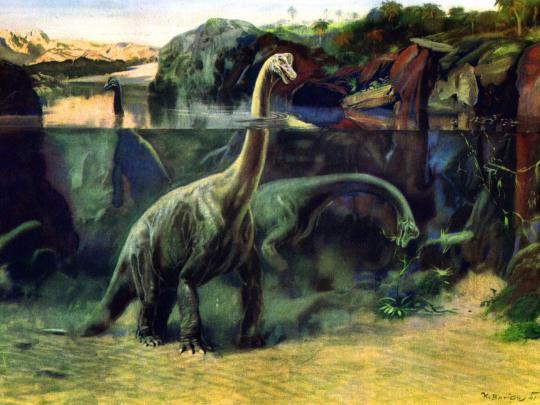
Johnny Bruck - Perry Rhodan, 1965
Zdeněk Burian - Brachiosaurus, 1941
126 notes
·
View notes
Photo

Zdeněk Burian (Czech, 1905-1981)
Basilosaurus - Late Eocene - illustration from The Age of Monsters by Josef Augusta & Zdeněk Burian, published in 1966 - painted 1964

One of my heros when I was a teen.
22 notes
·
View notes
Text









Věra Lukášová, 1939
Hrají: Rudolf Hrušínský, Jiřina Stránská, Lola Skrbková, Zdeněk Podlipný...
Režie: E. F. Burian
Scénář: Božena Benešová (předloha), E. F. Burian (divadelní hra)
#rudolf hrušínský#actor#30s#film#movie#silver screen#1939#czechoslovakia#retro#cinematography#cinema#black and white#loveit#my screenshots#romantic#věra lukášová#jiřina stránská#lola skrbková#zdeněk podlipný#e.f. burian
2 notes
·
View notes
Note
i was rewatching the rite of spring segment from fantasia and i've got to wonder. Why Did We Draw Archaeopteryx Like That. i remember toys having that same, boomerang arm shaped pose too. it's like a monkey lizard more than a bird.
Ooh okay this is a fun one cause while it technically is an Archaeopteryx and is listed as such in the production draft, I don't think the design is based on Archaeopteryx at all!
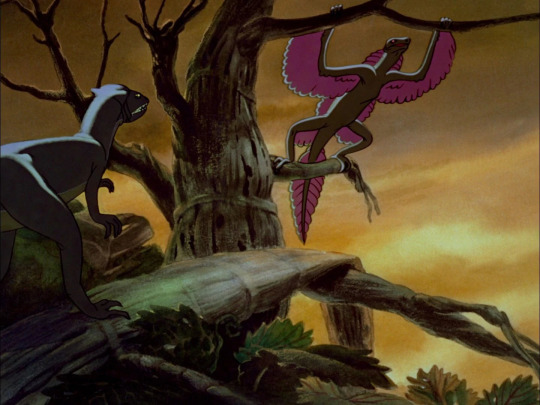
To me, this "Archaeopteryx" almost exactly resembles something else, the fascinating historical phenomenon called Proavis.
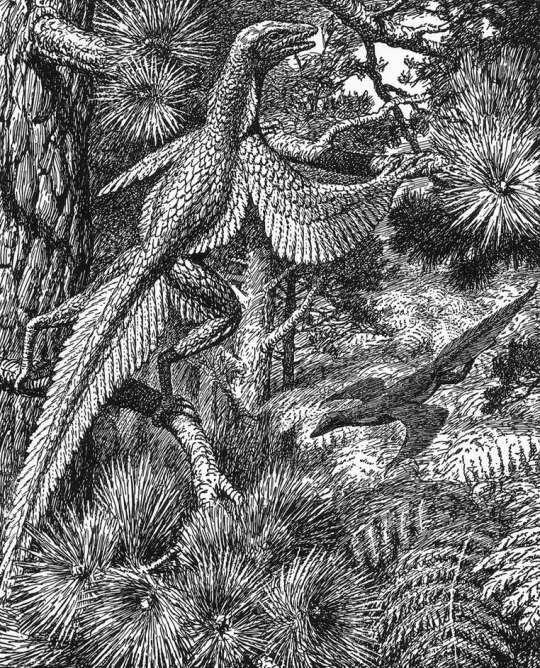
Proavis, or Tetrapteryx as some four-winged interpretations were called, was a hypothetical prehistoric creature that was proposed in the early 20th century as a best guess at what the unknown ancestor of birds could have looked like. The illustration above was drawn in 1926 by Gerhard Heilmann, a Danish artist and amateur scientist who argued that birds evolved from non-dinosaurian archosaurs like Euparkeria. In his 1916 book Vor Nuvaerende Viden om Fuglenes Afstamning and the 1926 English translation The Origin of Birds, he presented Proavis as the imagined midpoint between a scaly ground-running archosaur and Archaeopteryx, which at the time held the title of The First Bird.

Other versions of the same hypothesis, like William Beebe's Tetrapteryx above, were published and discussed around the same time, but it was Heilmann's Proavis that gained immense popularity to the point that bird evolution was considered essentially "solved" for decades. It was also painted by Zdeněk Burian, one of the Old Greats of palaeoart, which kept the concept alive in dinosaur books for decades as well.

Of course further study has shown this hypothesis to be incorrect and that birds are instead members of Dinosauria (and honestly Heilmann either missed or ignored a lot of evidence for a dinosaurian origin of birds even in the 1910s), but the Proavis to me remains a beautiful and fascinating concept that represents scientists and artists striving to understand the prehistoric world and the passage of evolution, much like we still do today!
And of course, its popularity in the early 20th century put it at the perfect time for Fantasia's artists to take... let's say heavy inspiration from Heilmann's imaginary Proavis when depicting a creature that was intended to be Archaeopteryx the whole time! The pattern of feathers matches up almost exactly, although the larger leg wings might have been inspired by Beebe's Tetrapteryx as well:
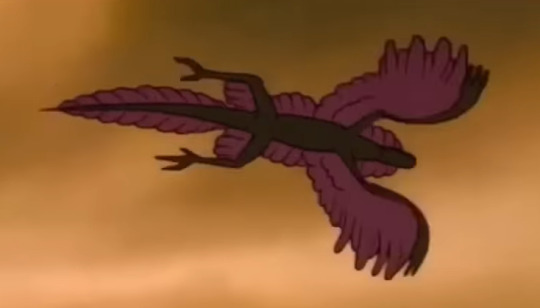
So to get back to your original question that led to this whole deep dive, artists didn't actually Draw Archaeopteryx Like That except when they were mistakenly drawing something that wasn't Archaeopteryx at all! If you want to read more about the Proavis and Tetrapteryx I recommend this Tetrapod Zoology blog post by Darren Naish, he does into more depth about the history of the concept and some of the unusual evolutionary ideas that Heilmann used to arrive at this weird and cool imaginary creature!
791 notes
·
View notes
Text

Gomphotherium, by Zdeněk Burian.
I love Gomphotherium. It has a funny name that is fun to say and also has four tusks interlocking. Sweet. It’s probably paraphyletic so enjoy it while you can.
Also Burian made it fuzzy which is adorable.
132 notes
·
View notes
Text
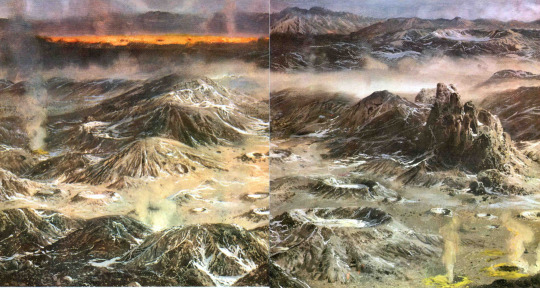
Archaean landscape

Cambrian seafloor with trilobites and jellyfish

The giant placoderm Dunkleosteus, hunting
(look how watery that seafloor is, I love it)
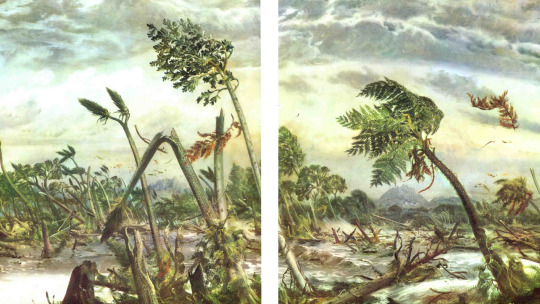
Storm blowing through a Carboniferous forest
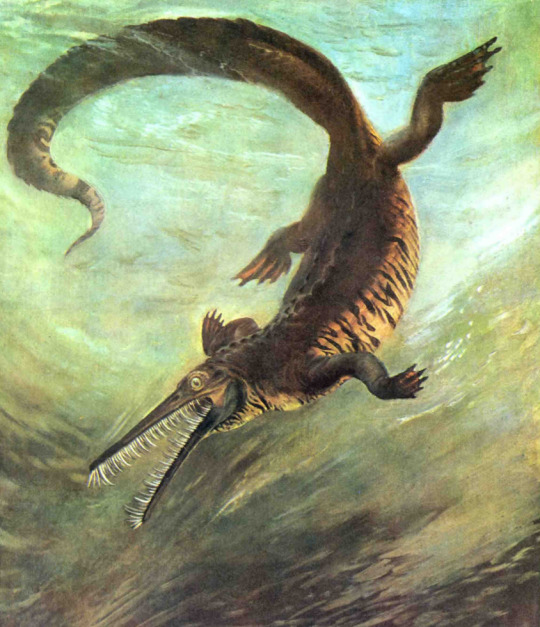
The early marine reptile Mesosaurus

The primitive ichthyosaur Mixosaurus
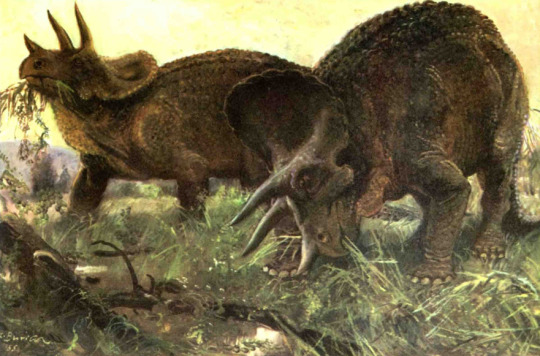
Triceratops grazing (beautiful, but a tad outdated reconstructions!)

Mosasaurus -- the reconstruction is a bit more croc-like than it should, but that water! That motion!

The rhinoceros-kin Metamynodon, wallowing
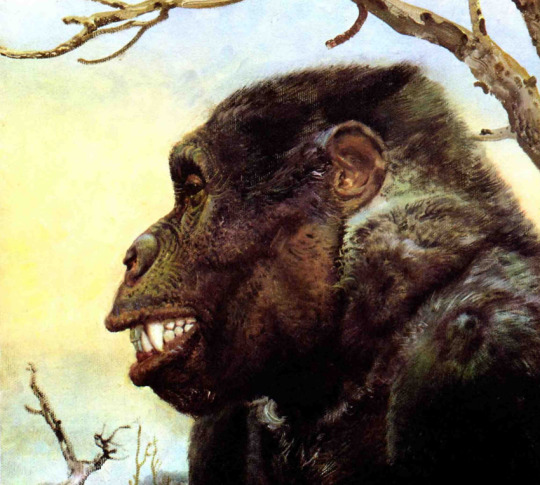
The early ape Dryopithecus
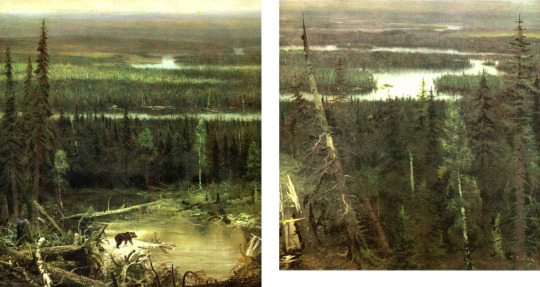
The great Eurasian forest during the Quaternary Ice Age
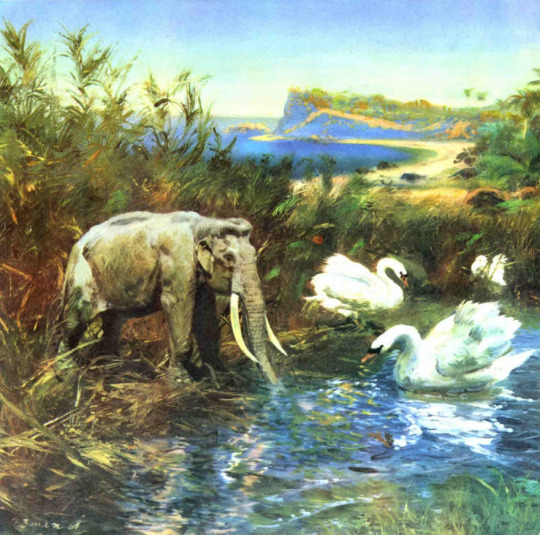
The Sicilian dwarf elephant Palaeoloxodon falconeri
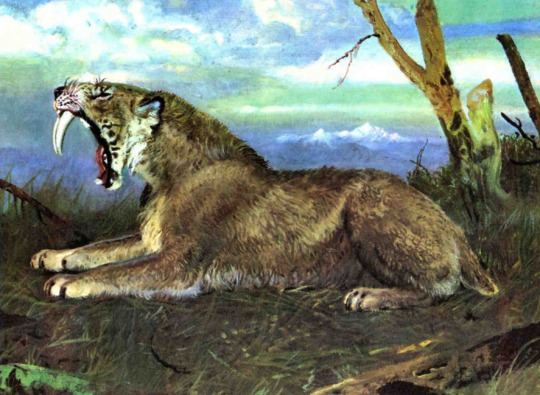
The South American sabertooth cat Smilodon
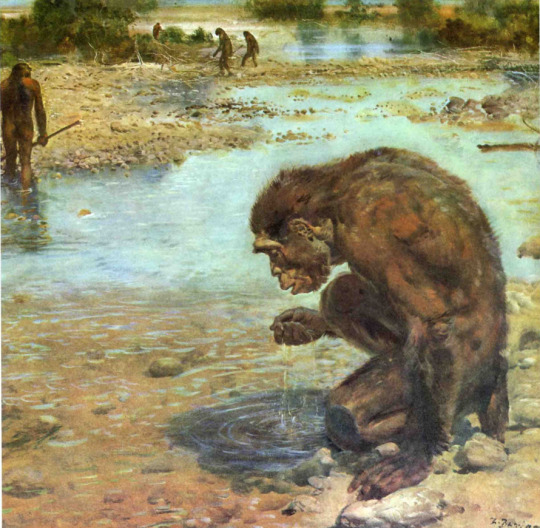
A hominid identified as Homo heidelbergensis (I would imagine it a bit more human-like)

Woolly mammoths, Mammuthus primigenius, digging for grass through the snow

Hunting Megaloceros

Making the Venus of Dolní Věstonice, about 27,000 years ago
* * *
Paleoart by the Czech painter Zdenek Burian (probably mostly painted between 1950 and 1975?), published in Zdeněk V. Špinar, Zdeněk Burian, Life Before Man, 1983
124 notes
·
View notes
Text
very niche opinion: there is no "better" when it comes to paleoart, except in a technical sense
outdated depictions of dinosaurs are not "better" than the new ones. they might be subjectively "cooler", but it's only "better" if drawn with higher level of skill, detail, etc.
idk i fucking love zdeněk burian's art but his tail-dragging dinosaurs aren't better than feathered depictions just because they're nostalgic
#og#i don't think i've ever mentioned it but dinosaurs are a ex-special interest of mine#and since i'm older than 8 a lot of the things i saw and read about dinosaurs as a child are now outdated#vintage paleoart is so important to me!! it might not be scientifically accurate but i love it!!#i see a godzilla-lookin t-rex and i'm like That's The Shit
7 notes
·
View notes
Text

Tygr ussurijský. Oil on canvas. 1966. Zdeněk Burian (1905 - 1981)
MutualArt
845 notes
·
View notes
Text

Before the Glacier, Zdeněk Burian, 1956
The glacier has a voice. It groans against the world, chewing and sighing, moaning and cracking. Its song rolls over the landscape, a long, lone constant as the seasons bleed from one to the next. The mammoths know its voice, listen to it to learn when the meltwaters will come and when they will stop. They hear its roars as it crumbles by the sea and note its stillness in the places where it rests. It is like a big sister, whispering secrets between huffs and rages, singing lullabies made of ice.
83 notes
·
View notes
Text

Tylosaurus proriger and Elasmosaurus platyurus, by Zdeněk Burian,1963
11 notes
·
View notes
Text
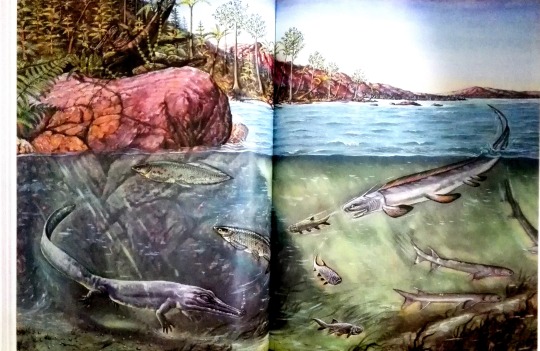





Illustrations of prehistoric Germany by Fritz Wendler for Deutschland in der Urzeit by Ernst Probst 1986, the style is copied from legendary Czech artist Zdeněk Burian.
I especially like the Stenopelix in the Early Cretaceous landscape, which is based on the Bückeberg Formation.
Also note the macaques in the Pleistocene landscape, their fossils were found in Wiesbaden.
13 notes
·
View notes
Text

Friends from the Ophiuchus, Zdeněk Burian, 1956
11 notes
·
View notes
